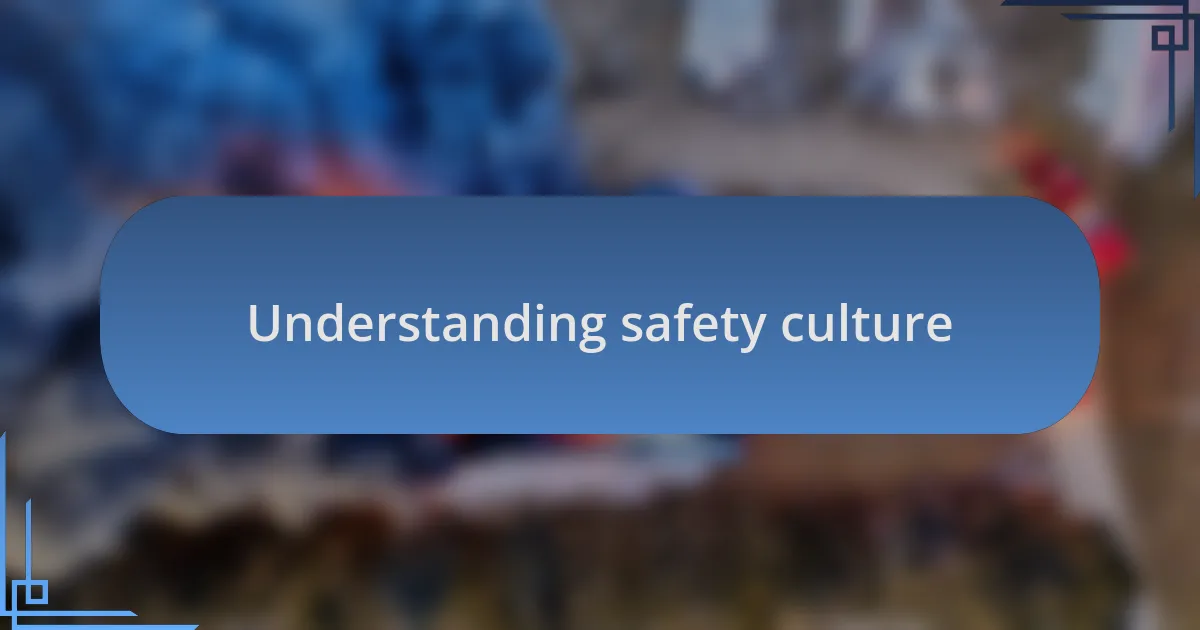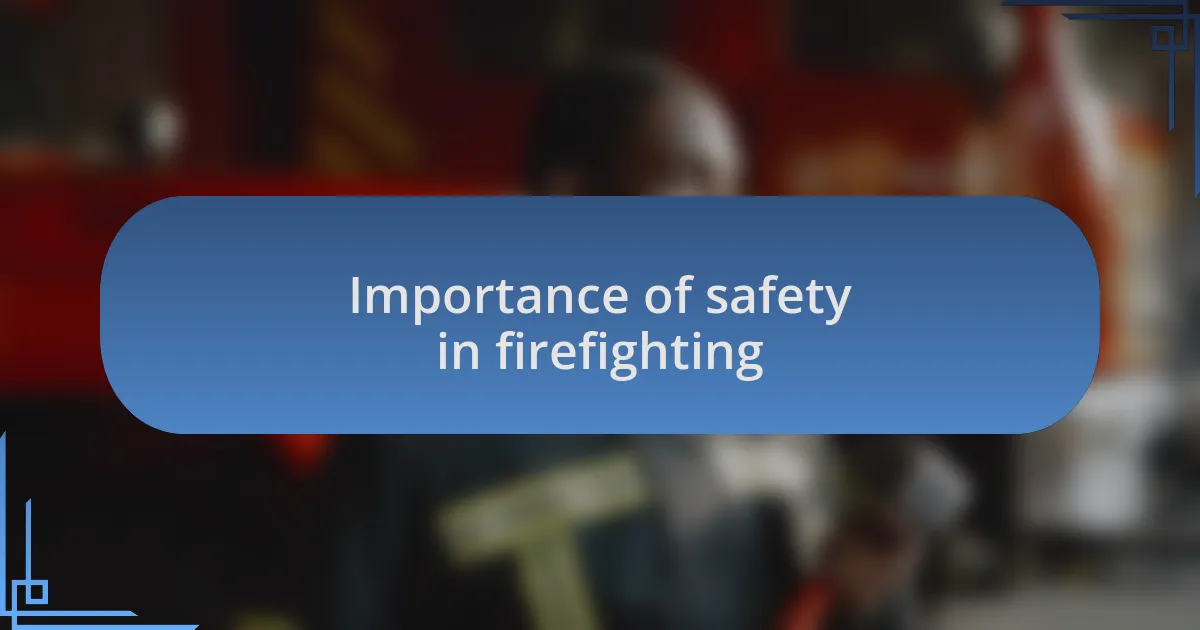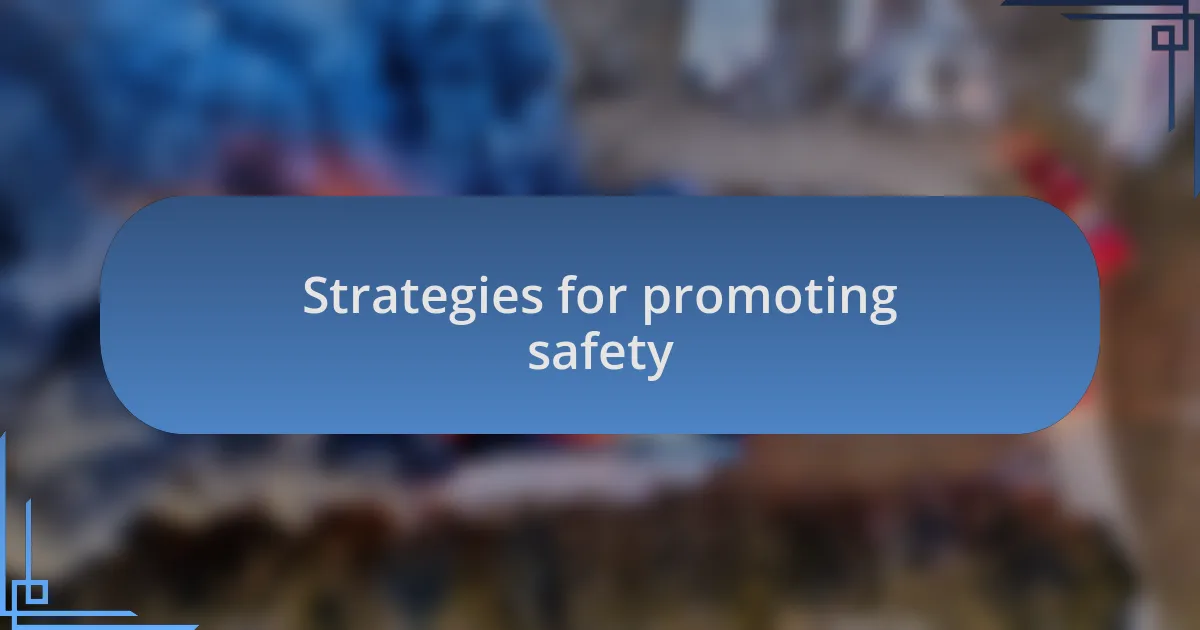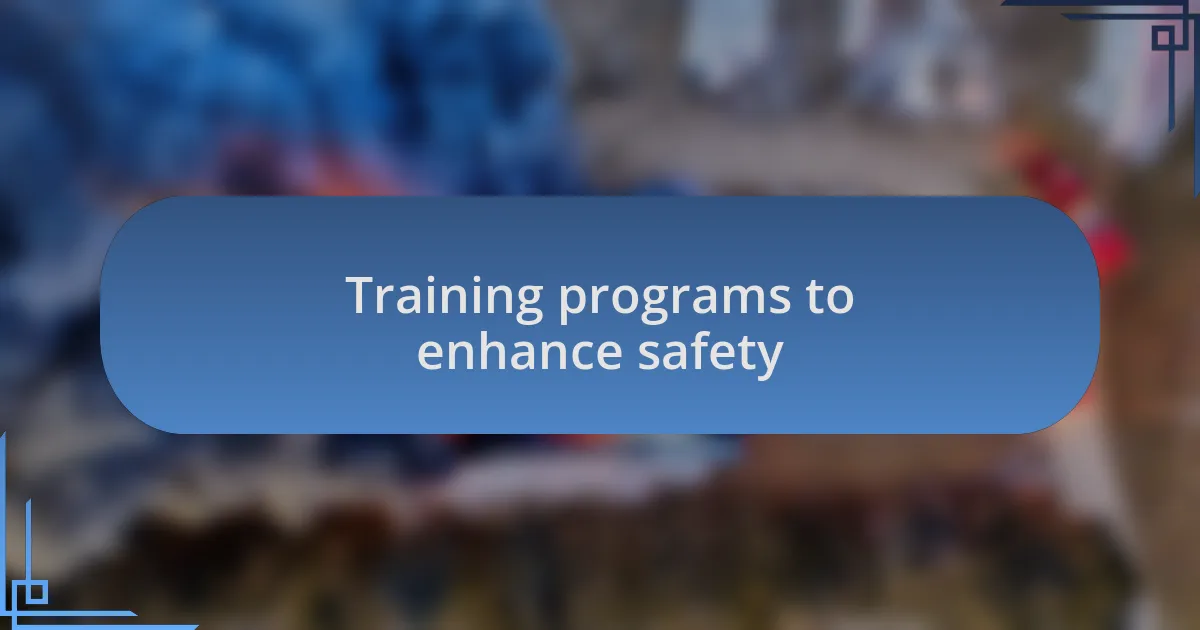Key takeaways:
- Understanding safety culture involves creating an emotional atmosphere where everyone feels responsible for each other’s safety, fostering open communication and ongoing trust.
- Prioritizing safety in firefighting enhances operational effectiveness and can prevent devastating consequences, requiring integration of safety discussions into routine practices.
- Key components of safety culture include open communication, leadership commitment, and ongoing training, which together build a strong foundation for safety awareness.
- Innovative strategies like recognition programs, realistic safety drills, and involving all team members in discussions can significantly enhance safety measures and team cohesion.

Understanding safety culture
Safety culture is more than just a set of rules; it’s an emotional atmosphere in which everyone feels responsible for each other’s safety. I recall a training session where a veteran firefighter shared a harrowing story about a near-miss incident. The palpable silence that followed made us all reflect: how do we cultivate an environment where everyone not only acknowledges risks but actively engages in mitigating them?
When we think of safety culture, it’s essential to consider the values and beliefs that shape behaviors. I’ve often asked my team, “What does safety mean to you?” The varied responses—from personal responsibility to teamwork—highlighted that safety culture is deeply personal and rooted in individual experiences. Each member’s perspective can enhance our collective commitment to safety.
Furthermore, fostering a strong safety culture requires ongoing dialogue and trust. I remember a moment when a junior firefighter hesitated to report a safety concern due to fear of judgment. This instance opened a critical conversation on how we can create a space where everyone feels empowered to speak up. Isn’t it fascinating how a single discussion can shift our entire approach to safety?

Importance of safety in firefighting
Safety is the cornerstone of effective firefighting. I often tell my trainees that our ability to save lives hinges on our commitment to safety practices. During one particularly intense training firefight, I observed a fellow firefighter pause mid-action to ensure everyone was accounted for. This moment reaffirmed for me that prioritizing safety not only protects the team but also enhances our operational effectiveness.
Reflecting on my experiences, I’ve seen how disregard for safety can lead to devastating consequences. I still vividly remember a drill where a minor lapse in communication led to a serious fall. It was a tough lesson, reminding me that every procedure and guideline has a purpose. Have we ever fully considered that our routine checks are not just formalities but critical lifelines that can prevent disasters?
In my opinion, fostering a culture of safety in firefighting must go beyond mere compliance; it should resonate with passion and urgency. I’ve witnessed how a simple team meeting focusing on recent safety incidents sparked changes in our operational protocols. It’s essential to ask ourselves: how often do we integrate these safety discussions into our routine? Just by embedding safety into our everyday conversations, we pave the way for a more vigilant and cohesive team.

Key components of safety culture
One key component of safety culture is open communication. I remember a time during a training session when we had a debriefing where everyone shared their thoughts on what went well and what didn’t. This level of openness not only helped identify issues but also strengthened our camaraderie. Have you ever noticed how much easier it is to trust teammates when everyone feels heard and valued?
Another critical element is leadership commitment. I think back to a captain who consistently demonstrated safety as a priority, showing up to drills with safety gear and protocols in mind. His actions set a powerful example for us all. It leads me to wonder why some leaders still overlook their vital role in shaping this culture. Shouldn’t we all strive to emulate such commitment?
Lastly, ongoing training and education play a pivotal role in reinforcing safety culture. I recall a workshop that introduced innovative techniques in fire response, which ignited my passion for continuing education. It’s fascinating how learning not only keeps skills sharp but fosters a mindset of safety. How often do we revisit training to integrate new insights? In my experience, regular training sessions create a community that thrives on shared knowledge and mutual responsibility for safety.

Strategies for promoting safety
Creating a culture of safety isn’t just about policies; it’s also about recognition and encouragement. I once took part in a recognition program where individuals who identified potential hazards were celebrated during team meetings. That shared acknowledgment reinforced the idea that we all play a role in safety, turning what could be a mundane routine into a motivating factor. Isn’t it interesting how a simple “thank you” can boost morale and inspire vigilance?
Another strategy that has worked well in my experience is conducting regular safety drills that mimic real-life scenarios. I recall participating in a fire simulation where we faced unexpected challenges, like a blocked exit. These simulations forced us to think on our feet and reinforced the importance of preparation. I often wonder how many lives could be saved if every department placed this level of emphasis on realistic training. It encourages everyone to stay alert and engaged, making safety an everyday priority.
Additionally, involving all team members in safety discussions can yield remarkable insights. During one of our safety brainstorming sessions, a junior firefighter shared a unique perspective on equipment usage that had never crossed my mind. Hearing fresh ideas from every level not only enhances safety but also strengthens teamwork. Have you considered how much untapped knowledge exists within your own crew? Engaging everyone fosters creativity and ensures that safety measures evolve alongside our ever-changing environment.

Training programs to enhance safety
Integrating hands-on training programs significantly enhances safety awareness among firefighters. I remember a workshop where we practiced using different types of fire extinguishers in various scenarios. The tactile experience not only solidified our understanding of how to respond in real situations but also fostered a sense of confidence. Could you imagine facing a fire without knowing exactly how to handle an extinguisher? Those moments during training are what prepare us for the real thing.
Moreover, mentorship programs can play a crucial role in shaping a safety-focused mindset. I had the privilege of shadowing a seasoned firefighter who shared not just techniques but also personal stories about near-misses. His experiences illustrated the gravity of safety precautions in a way that no textbook ever could. Isn’t it fascinating how learning from someone else’s experiences can create a deeper appreciation for safety protocols?
I’ve also found that incorporating technology into training can effectively enhance emergency preparedness. One time, we used virtual reality to simulate rescue situations, and I was amazed at how real it felt. This innovative approach allowed us to navigate complex environments without any risk, mirroring the unpredictability we might face on the job. How powerful would it be if every firefighter had access to such immersive training? It’s about preparing ourselves mentally and physically for everything we may encounter.